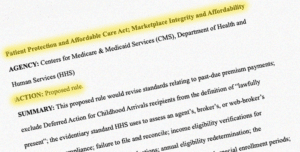China Sees 421,329 Percent Growth In EV Sales Since 2010

Electric vehicles are becoming an increasingly common sight on American roads, even in places that aren’t historic EV strongholds like California and New England. However, if you think increasing adoption in the US is a big deal, then hold on to your butt. China — the world’s largest car market — is adopting EVs at a rate that makes us look lazy, according to a report published on Monday by Al Jazeera.
American Car Buyers Are Warming Up to EVs
In 2022, the International Energy Agency claims that 14 percent of all new vehicles sold were EVs. This marks a nine percent increase over 2020, which is a pretty big deal. Three markets lead EV sales, with America in third place and Europe in second. China, thanks partly to the changing economic landscape of the country and also thanks to its New Energy Vehicle policies, accounts for approximately 60 percent of global EV sales. The big slice of the pie makes sense when you consider that China has around half of all the cars in the world on its roads.
Screenshot: IEA
China’s EV growth trajectory is bananas, too. For example, in 2010, reports show that around 1,400 EVs were sold in the People’s Republic. In 2022 that number was approximately 5.9 million EVs, which, for those of you playing at home, is an increase of 421,329 percent. The U.S., by comparison, went from around 1,200 to just under a million in that same time. Part of the reason for that is the degree to which China was able to incentivize adoption with fairly huge discounts on the purchase price of vehicles, but also because the nature of those incentives prioritized more affordable cars.
China’s NEV policies are less generous than they have been in the past, but they still make buying an EV just about the cheapest way to get into a new car for the populace there. In the U.S., we obviously have incentives, but the way that these are structured, combined with most of our EVs being prohibitively expensive for many new car buyers, has put the brakes on our adoption rates. Add in that our private charging networks are slapdash and poorly maintained, and you see where I’m going with this.
What will be particularly interesting is seeing how policy changes in the US with an increased focus on federal spending on EV infrastructure coupled with many states planning on instituting bans on the sale of new internal combustion vehicles will do for the number of electric cars on the road. Further, will increasing overall EV sales incentivize manufacturers to start offering more low-cost mid-range electric cars, further democratizing the technology?
Let us know what you think in the comments.




